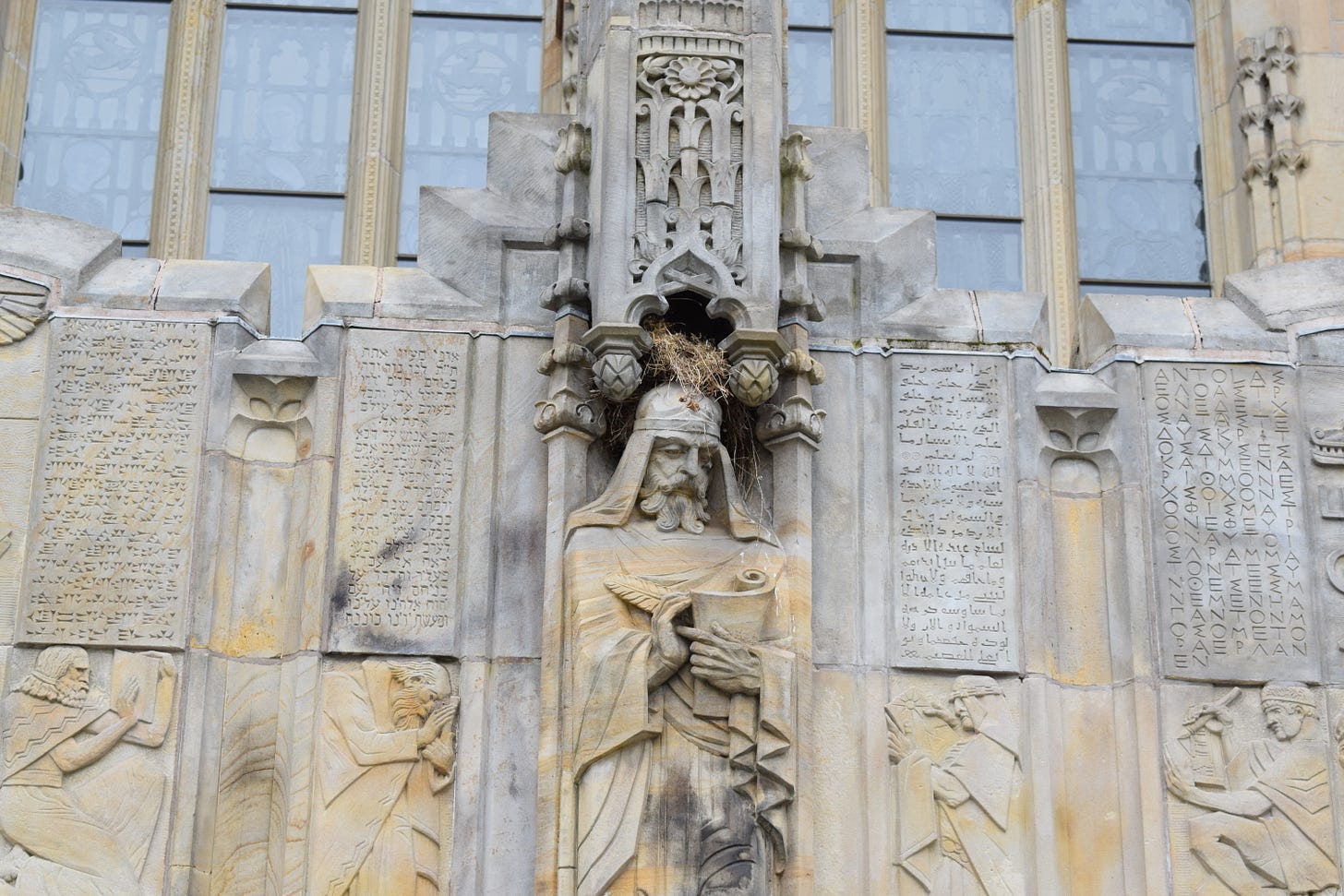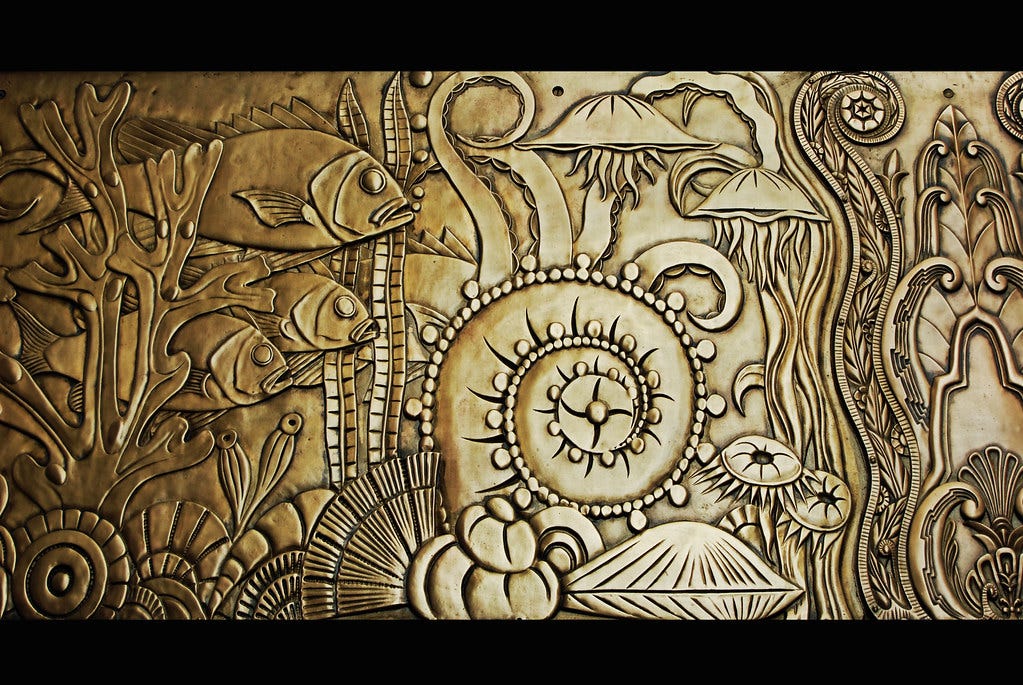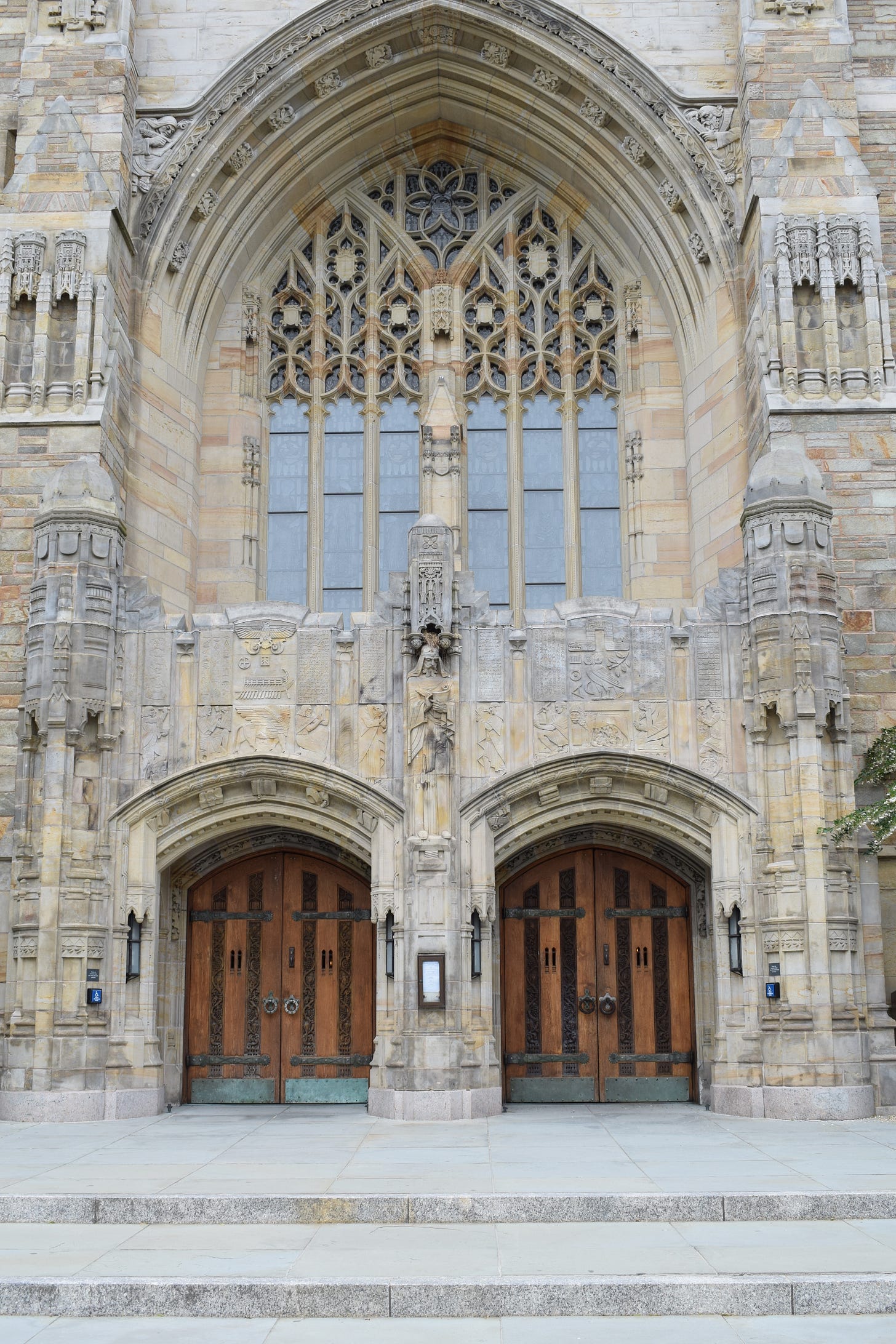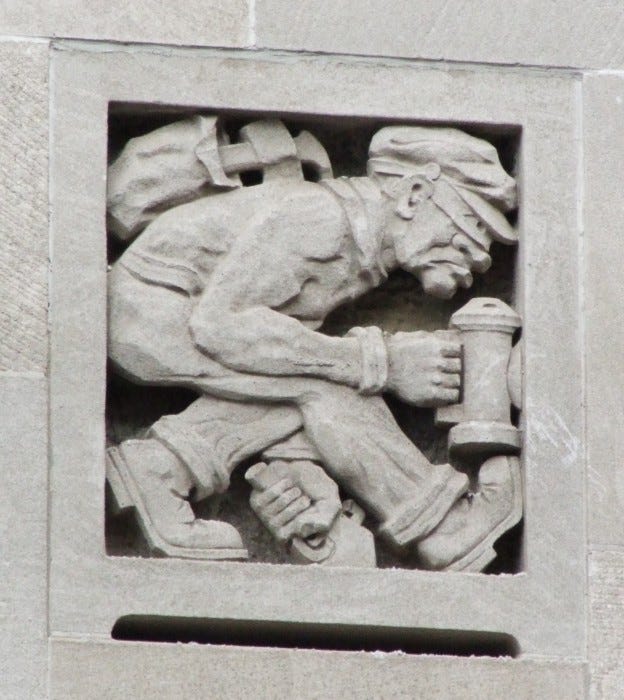Rene Paul Chambellan: the Master of Art Deco Architectural Sculpture
You've probably seen his work, if only in pictures.
When I first moved to New York City, I worked in midtown Manhattan, at Saks Fifth Avenue. Rockefeller Center is across the street from the store, and sometimes after work I would wander around the complex, window shopping in the underground shops in the maze of corridors that led to the subway. Sometimes I would also peek into the windows of the stores that lined the plaza. Like thousands of other people every day, I used to pass statues like the famous one of Atlas, who holds up the world on 5th Avenue, directly across from Saks.
As I grew more familar with Manhattan, whenever I could I would just walk around Midtown. Working at Saks was great for that, because it was at the center of everything, and one could walk in any direction and find interesting things to view. I was indulging in one of my favorite pastimes - looking at architecture.
One day I’m going to have to write something about the Art Deco architectural treasures in Midtown Manhattan, because there is so much of it, and most of it is truly impressive.
One of the Deco buildings that caught my eye was the Chanin Building, an office building on the corner of 42nd and Lexington Avenue, just down the street from Grand Central. It has all the setbacks and other features that make NYC’s Deco skyscrapers so iconic. But honestly, it’s not all that special except for one thing: the ornate sculptured tracery and bronze metalwork that cover the second and third floor facades.
Floral patterns, shells, leaves and more wrap around each other and around the building, the eye is simply captured by this unexpected stone tracery. Supporting it are rectangular pilasters with more tracery on the capitals, with bronze embossed panels in the windows between them. Bronze friezes flow with sea creatures and plants. Who did this? It was beautiful.
I realized in my walks that I had not been paying attention to my surroundings. There was wonder here, and I had missed it. Not just in midtown, but everywhere. I think that’s when my passion and appreciation for ornament was born, and it colored my relationship with architecture in a positive way that has lasted to this day.
Fast forwarding to 2017 - by this time, I had emersed myself in all things related to architectural history, styles, etc. I was a writer about architecture and history for Brownstoner.com, and was now a card-carrying preservationist, active in multiple organizations. I knew my ornamentation; the materials, the different periods and styles and more.
When I attended my college reunion at Yale that year, I started to really look at the buildings on the campus where four years of my life took place. I again realized that although I always had an appreciation of Yale’s built environment and thought it beautiful, I didn’t know what I was looking at then. Armed with my digital camera, which had a decent zoom lens, I got up early on that Saturday morning and started wandering around.
Sterling Memorial Libray is the crown jewel of the campus. Standing in front of it, on the Cross Campus lawn, I realized that aside from being a temple for the worship of books and knowledge, it was also a respectable Art Deco skyscraper, complete with the same setbacks and massing as any office building from the period. I hadn’t noticed that before.
I also hadn’t really noticed the detail in the ornamentation on the facade. My camera captured sculptured detail that I noticed in passing for four years, when I chalked it up to the general Gothic-ness of much of the campus. I knew a great deal of the campus was built in the late 1920s and early ‘30s, and was an homage to Oxford and Cambridge in England.
But I really hadn’t noticed the Art Deco-ness of the ornament. Yeah, it was very Gothic, sometimes in the most out of the way places, but look - it’s Gothic through the lens of an Art Deco sensibility. Who was this artist?
(I learned who the architect of this massive building project was too, but that’s also another story for another time.)
A little research told me who - a 20th century French-American sculptor named Rene Paul Chambellan. And not only was he responsible for the ornament on the facade and inside Sterling, he was also the man who gave us the wonderful sculptures and ornamentation on the Law School, and more.
AND, I discovered, he created the ornametal tracery on the Chanin Building, he sculpted the Atlas statue at Rockefeller Center, and so much more. I had to learn more about this man. The Brooklyn-centric blog Brownstoner gave me the opportunity to do just that, and without further ado, here is his story, published last week on Brownstoner.
I give you Rene Paul Chambellan, the finest architectural sculptor of the Art Deco period.
https://www.brownstoner.com/history/rene-chambellan-art-deco-architecture-sculptor-brooklyn-nyc/








Chambellan was a genius and much too neglected. He patented the expository forms that we now think of as being typical of American Art Deco.